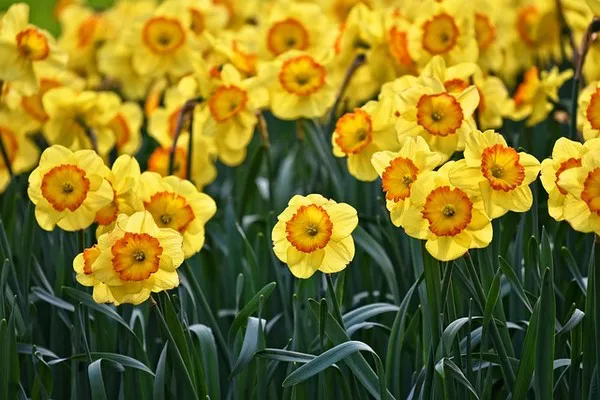As the vibrant hues of primroses grace our gardens in the early spring, their beauty is undoubtedly a sight to behold. However, as the blooming season comes to an end, many gardeners find themselves pondering the next steps for these delicate perennials. In this comprehensive guide, we will delve into the intricacies of caring for primroses after flowering, providing valuable insights and practical tips to ensure the continued health and vitality of these charming plants.
Understanding the Primrose Life Cycle
Before diving into post-flowering care, it is essential to grasp the basic life cycle of primroses. Primroses typically bloom in early spring, displaying an array of colors that enhance the garden landscape. As the flowering season concludes, the plant begins to shift its focus from blooming to preparing for the dormant phase. This transition period marks a crucial time for gardeners to intervene and guide the plant toward optimal growth and resilience.
Pruning for Prosperity
One of the first steps in post-flowering primrose care involves pruning. Pruning not only helps maintain the plant’s shape but also stimulates new growth and enhances overall plant health. Use clean, sharp scissors or pruning shears to remove spent flowers, cutting back to just above a healthy leaf. This encourages the primrose to redirect its energy toward the development of new foliage and promotes a bushier, more robust appearance.
However, exercise caution and avoid excessive pruning, as removing too much foliage may stress the plant. Focus on deadheading spent blooms and any damaged or yellowing leaves, allowing the primrose to channel energy into essential areas.
Adequate Watering: Striking the Right Balance
Proper watering is a key factor in post-flowering primrose care. While primroses thrive in moist soil, they are susceptible to root rot if overwatered. Strike a balance by providing consistent moisture without allowing the soil to become waterlogged.
As the flowering season wanes, adjust your watering routine to accommodate the plant’s changing needs. Keep an eye on weather conditions and adapt accordingly. In periods of increased rainfall, scale back on watering to prevent waterlogged soil, and conversely, supplement rainfall with irrigation during dry spells.
Fertilization Strategies
Fertilizing primroses after flowering is crucial to replenish nutrients and support healthy growth. Choose a balanced, water-soluble fertilizer with a formulation such as 10-10-10 to provide a well-rounded blend of essential nutrients. Apply the fertilizer according to package instructions, ensuring even distribution around the base of the plant.
For optimal results, initiate fertilization shortly after pruning, as this is when the primrose is most receptive to nutrient absorption. Repeat the process every 4-6 weeks throughout the growing season, tapering off as the plant enters dormancy in late autumn. This strategic approach ensures that primroses receive the necessary nutrients to thrive without the risk of overfeeding.
Division for Renewal
As primroses mature, they may become crowded, leading to decreased vigor and diminished flowering. Division is a rejuvenating practice that involves separating and replanting crowded clumps to encourage new growth and enhance overall plant health.
The best time to divide primroses is during the early spring or late summer. Gently lift the plant from the soil, taking care to preserve the root system. Use a sharp knife or garden spade to divide the clump into smaller sections, each containing healthy roots and shoots. Replant these divisions at the desired spacing, ensuring adequate water and mulch to support their establishment.
Mulching Matters
Mulching is a fundamental aspect of primrose care that offers a myriad of benefits. Applying a layer of organic mulch around the base of the plant helps retain moisture, suppress weeds, and regulate soil temperature. Additionally, mulch acts as a protective barrier, shielding the primrose’s delicate roots from temperature extremes.
Opt for organic materials such as compost, shredded bark, or straw, and apply a 2-3 inch layer around the plant, leaving a gap around the stem to prevent moisture-related issues. Mulching not only contributes to the overall health of the primrose but also imparts a polished aesthetic to the garden.
Pest Management Strategies
Vigilance against pests is a fundamental aspect of post-flowering primrose care. Common pests that may target primroses include aphids, slugs, and spider mites. Regularly inspect the plants for signs of infestation, such as distorted leaves, discolored foliage, or a sticky residue.
Address pest issues promptly using environmentally friendly methods. Introduce beneficial insects like ladybugs to control aphids, and employ slug deterrents such as copper barriers or organic slug pellets. Regularly washing the foliage with a mild soap solution can help keep spider mites at bay. Integrated pest management (IPM) practices are not only effective but also promote a balanced and eco-friendly approach to garden care.
Dormancy Preparations
As autumn approaches, primroses naturally enter a period of dormancy. During this phase, the plant redirects its energy inward, conserving resources for the upcoming growing season. To support a smooth transition into dormancy, gradually reduce watering and cease fertilization in late summer.
Remove any remaining dead foliage, creating a tidy and disease-resistant environment for the plant. Consider applying a layer of mulch to protect the primrose during winter, especially in regions with harsh temperatures. While primroses are generally hardy, these preparatory steps ensure they enter dormancy in optimal condition, poised for a vibrant resurgence in the following spring.
Conclusion
In conclusion, the post-flowering care of primroses is a nuanced process that requires a combination of pruning, watering, fertilization, and strategic interventions. By understanding the primrose life cycle and implementing these practices, gardeners can ensure the continued vitality and beauty of these charming perennials. Whether you are a seasoned gardener or a novice enthusiast, unlocking the potential of your primroses after flowering is a gratifying journey that yields a garden filled with vibrant colors and thriving plant life.


